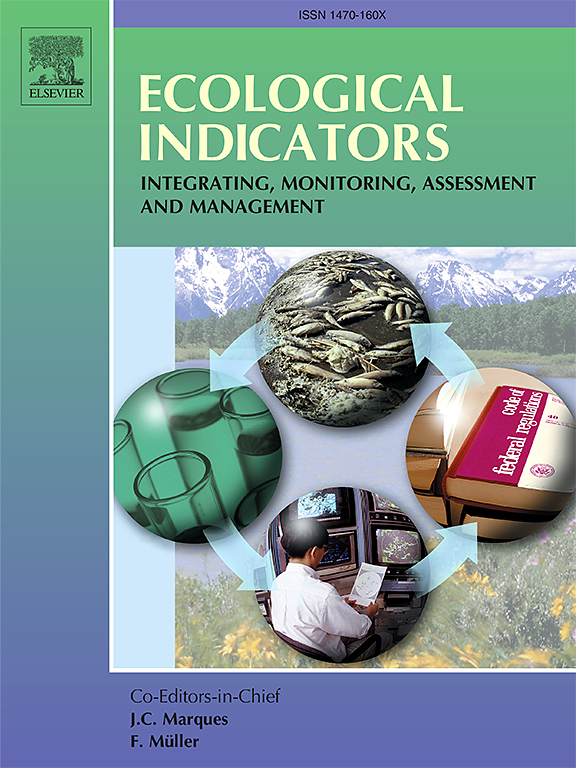为干旱区滑雪场量身打造经济-生态-旅游耦合框架:基于PSR模型的新疆案例研究
IF 7
2区 环境科学与生态学
Q1 ENVIRONMENTAL SCIENCES
引用次数: 0
摘要
干旱区占全球陆地面积的40.6%,其降水少、蒸发量大、生态脆弱的气候特征给冰雪旅游的发展带来了严峻挑战。以西班牙内华达山脉和美国犹他州为例,干旱地区滑雪场的大规模开发引发了水资源枯竭和植被干扰等生态危机。然而,现有研究对干旱区“水资源刚性约束-旅游开发-生态响应”的独特互动机制认识不足,缺乏精确的评价工具。为了弥补这一差距,本研究以中国新疆31个s级滑雪场(2011-2023年面板数据)为例,构建了基于PSR模型的“经济-生态-旅游”(EET)耦合协调指标体系,并将熵加权TOPSIS模型、障碍度模型、灰色预测模型相结合,形成了“指标筛选-障碍诊断-趋势预测”的闭环方法。结果表明:新疆滑雪场EET耦合协调度从接近不协调(0.386)上升到初级协调(0.636),类型由“经济滞后”向“旅游滞后”转变;旅游交通便利性(道路密度、客流量)成为旅游交通发展的核心障碍因素。未来10年,耦合协调度将继续上升,到2027年稳定在初级协调阶段(D≥0.65)。本研究验证了干旱区生态阈值的“不对称响应”理论,并提出了“生态刚性约束系数”和“将碳排放纳入环境认证”等政策建议,为中亚和北美干旱区滑雪场提供了可移植的量化管理范式。本文章由计算机程序翻译,如有差异,请以英文原文为准。

Tailoring an economic-ecological-tourism coupling framework for arid-region ski resorts: A PSR model-based case study of Xinjiang, China
Arid regions constitute 40.6 % of the global landmass, with their climatic characteristics of low precipitation, high evaporation, and ecological fragility imposing severe challenges on ice-snow tourism development. Take the Sierra Nevada in Spain and Utah in the United States as examples, large-scale development of ski resorts in arid areas has triggered ecological crises such as water resource depletion and vegetation disturbance. However, existing studies suffer from insufficient understanding of the unique interaction mechanism of “rigid water resource constraints-tourism development-ecological response” in arid regions, leading to a shortage of precise assessment tools. To bridge this gap, this study takes 31 S-class ski resorts in Xinjiang, China (with 2011–2023 panel data) as a case, constructs an “Economic-Ecological-Tourism” (EET) coupling coordination indicator system based on the PSR model, and integrates entropy-weighted TOPSIS, obstacle degree model, and grey prediction model to form a closed-loop methodology of “indicator screening-obstacle diagnosis-trend prediction”. The findings show that the EET coupling coordination degree of Xinjiang ski resorts has increased from near-disharmony (0.386) to primary coordination (0.636), with the type shifting from “economy-lagging” to “tourism-lagging”. Tourism traffic convenience (road density, passenger turnover) emerges as the core obstacle factor. The coupling coordination degree is projected to continue rising in the next decade, stabilizing in the primary coordination stage (D ≥ 0.65) by 2027. This study validates the “asymmetric response” theory of ecological thresholds in arid regions, and proposes policy recommendations such as the “ecological rigid constraint coefficient” and “inclusion of carbon emissions in environmental certification”, providing a transplantable quantitative management paradigm for ski resorts in arid regions of Central Asia and North America.
求助全文
通过发布文献求助,成功后即可免费获取论文全文。
去求助
来源期刊

Ecological Indicators
环境科学-环境科学
CiteScore
11.80
自引率
8.70%
发文量
1163
审稿时长
78 days
期刊介绍:
The ultimate aim of Ecological Indicators is to integrate the monitoring and assessment of ecological and environmental indicators with management practices. The journal provides a forum for the discussion of the applied scientific development and review of traditional indicator approaches as well as for theoretical, modelling and quantitative applications such as index development. Research into the following areas will be published.
• All aspects of ecological and environmental indicators and indices.
• New indicators, and new approaches and methods for indicator development, testing and use.
• Development and modelling of indices, e.g. application of indicator suites across multiple scales and resources.
• Analysis and research of resource, system- and scale-specific indicators.
• Methods for integration of social and other valuation metrics for the production of scientifically rigorous and politically-relevant assessments using indicator-based monitoring and assessment programs.
• How research indicators can be transformed into direct application for management purposes.
• Broader assessment objectives and methods, e.g. biodiversity, biological integrity, and sustainability, through the use of indicators.
• Resource-specific indicators such as landscape, agroecosystems, forests, wetlands, etc.
 求助内容:
求助内容: 应助结果提醒方式:
应助结果提醒方式:


